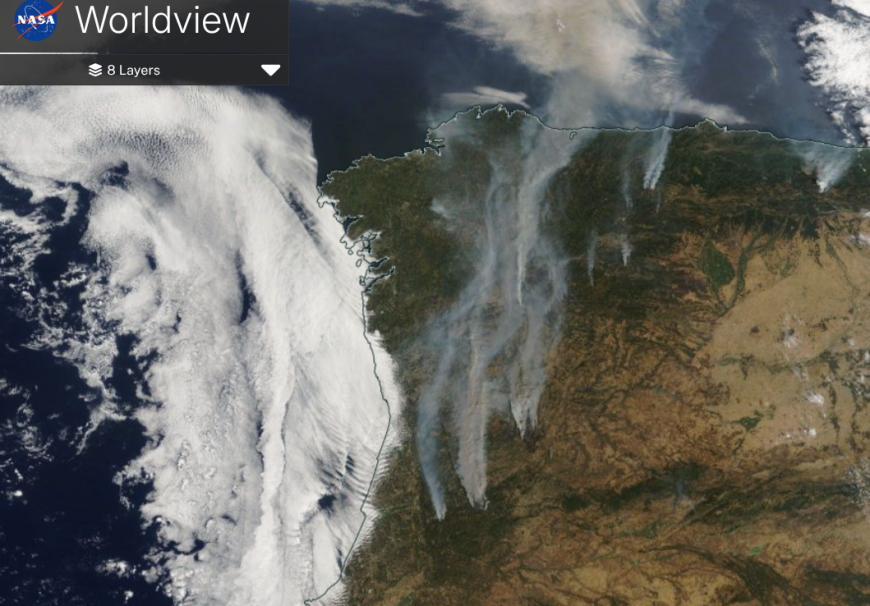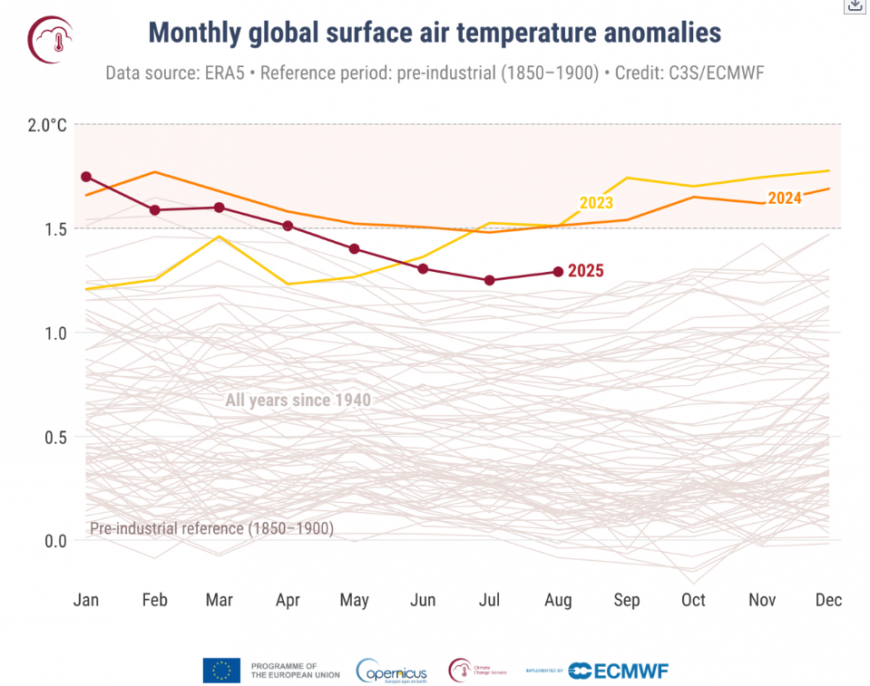
The summer of 2025 in Portugal was “extremely hot and extremely dry”. It was the hottest summer since 1931. It was also the driest summer on record and just under quarter (24%) of the average rainfall according to IPMA, the Portuguese Institute for the Sea and Atmosphere.

Thirty-three new maximum air temperature extremes and 10 new minimum air temperature extremes were registered this summer. In June, a new June maximum temperature for mainland Portugal was recorded in Mora at 46.6°C on the 29th. It is a town east of Lisbon, well inland in the Évora District. At the time there were heatwave conditions across Spain, Italy and France as well as in Portugal. Heat-waves are most intense in inland areas of Portugal which lack the cooling coastal winds.

England saw four heatwave episodes but the highest temperature of the summer for the UK was 35.8C (96.4F) at Faversham, Kent on 1st July. It became the hottest summer on record for the UK but well away from the all time UK record temperature of 40.3C.
Portugal saw three heatwaves mid June, the end of June into July when the highest temperature fo the summer occurred. July was the 7th driest in Portugal since 2000 and the 9th warmest since 1931. By the end of July about 67% of mainland Portugal was in a "meteorological drought."
Then the third heatwave set in at the end of July lasting well into August. By August, it was forest fires in the north and central areas that were filling the headlines. People were injured and four people died with widescale damage and huge impacts on the environment.
There have been solitary calls in the parliament to address the increasing and frequent heatwaves along with workers rights and conditions. Recalling the recent heatwave between late June and early July, which saw temperatures exceed 40 degrees Celsius in Lisbon, political party PAN's (People-Animals-Nature) only member of parliament António Valente, spoke up about people working outdoors, exposed to extreme temperatures, "particularly those involved in urban cleaning, green space maintenance, and waste collection". Spain was used as comparison, with existing legislation regarding protective measures for workers exposed to extreme temperatures including reorganising urban cleaning workers' shifts to avoid the worst of the heat, such as to early morning hours.

NASA WorldView 15th August 2025 wildfire smoke in southerly hot flow
There have been measures to prevent and control forest fires, with the prohibition of campfires and increased surveillance in forest areas. For urban areas the promotion of tree planting has been pushed to increase shade and reduce the heat island effect.
The United Nations Office for Disaster Risk Reduction UNDRR analysed the 2022 Portugal heatwave and found that:
“Urban heat islands intensify the effects of heatwaves in Portuguese cities. They lower productivity and increase health risks. Heat-waves have significant impacts on agriculture, leading to significant economic losses and threatening food security. Agricultural losses account for more than 60 percent of drought-linked losses.”
Copernicus Climate Change Service (C3S) monitor European and worldwide climate data issuing regular climate bulletins.
“August 2025 was the third-warmest August on record, just 0.22°C cooler than the two warmest months of August, recorded in 2023 and 2024. Southwestern Europe experienced its third major heatwave of the summer, leading to heat stress and contributing to the spread of wildfires in the region.”

Monthly global surface air temperature anomalies (°C) relative to the 1850–1900 pre-industrial reference period from January 1940 to August 2025, plotted as time series for each year.
"August 2025 was the third-warmest on record globally…With the world’s ocean also remaining unusually warm, these events underline not only the urgency of reducing emissions but also the critical need to adapt to more frequent and intense climate extremes.” Samantha Burgess, Strategic Lead for Climate, ECMWF
The August heatwave saw daily maximum temperatures reaching 40°C across much of SW Europe, peaking at 45°C in Portugal and southern Spain. Much of the affected region experienced ‘very strong heat stress’ during the heatwave, corresponding to 'feels-like' temperatures between 38°C and 46°C. Parts of northeastern and southern Spain and southern Portugal recorded ‘extreme heat stress’ (feels-like temperature of 46°C or higher). It was an intense summer especially when combined with the wildfires. The extreme heat is said to have been responsible for many excess deaths
Loading recent activity...